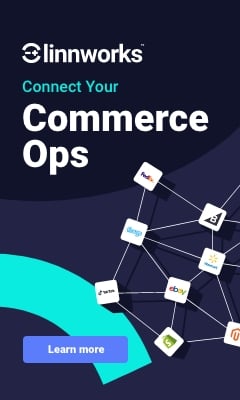Logile: Making the Case: Employee Scheduling as a Sales Enablement Tool
Guest Blog: Matthew Zelek, Senior Manager, Pre-Sales Consulting. Many benefit drivers associated with implementing workforce management solutions are apparent. For example, an effective employee scheduling solution is often associated with improvement in labor optimization, legislative compliance and employee satisfaction. But one immensely impactful benefit, particularly for small box and specialty retailers, that often goes overlooked is utilizing a workforce management scheduling application as a sales enablement tool. While we take a closer look at how to drive incremental retail sales through better scheduling in a separate post, read on for an introduction to this intriguing concept.
To that end, one of our golden rules in workforce management is “the right person, in the right place, at the right time to perform the task.” Equally as important is “the right person, in the right place, at the right time to service the customer.” Properly aligning labor coverage to customer traffic demand will invariably result in an increase in sales and, especially for a specialty retailer, will increase customer conversion rate by making sure selling hours are allocated when customers are in the store.
But when evaluating a business case, how do we associate an achievable and measurable ROI dollar amount to that statement, particularly in a retail environment where minimum coverage scheduling may apply for a substantial portion of a store’s open selling hours? Even in that environment, let’s examine how a sampling of automated scheduling features can lead directly to an increase in sales.
One 250+ location retailer calculated that it achieved a conservative improvement of approximately 0.75 percent in allocated labor against actual customer traffic. The retailer estimated that the improvement in scheduling resulted in an annual increase of sales of almost $11 million. This was calculated by taking the average of 1,200 total selling labor hours per store on a weekly basis at a $200 sales per labor hour and allocating for the 0.75 percent improvement (accounting for gross profit percentage) to calculate accurately what profit is applied to the bottom line.
Additionally, aligning the more skilled sales associates with peak traffic can result in both an increase in conversion and an increase in the items per transaction. Especially in this environment of increased online sales, there is no replacement for customer interaction with enthusiastic, knowledgeable sales associates to increase revenue.
Consider that same representative 250+ location retailer we previously referenced. The retailer calculated that with scheduling more productive associates at peak times, they achieved an increase in units per transactions of 0.75 percent. What does that mean in actual increased profit? Let’s say the retailer processes approximately 85 million customer transactions annually, and it averages about two units per transaction at an average unit cost of $20. If better scheduling can increase the units per transaction by just .0075, the result is an increase of units per transaction to 2.015. By adding a reasonable gross profit percentage, this translates into a boost of an additional $10 million or more in annual sales for the enterprise!
So, when you’re making the case for a workforce management solution, make sure to consider whether sales enablement is one of the benefit drivers.
About Logile
Logile, Inc. delivers industry-leading retail solutions for in-store planning, execution and workforce management. Our proven AI and machine-learning technology and industrial engineering expertise help retailers worldwide provide the best customer service at the optimal cost. Labor standards, forecasting, scheduling, time and attendance, food safety, task management—we transform store operations.
- Never lost a customer
- The only workforce management company on RIS News’ Top-20 Best Retail Vendor list for multiple years
- 100% dedicated to each customer’s success
To find out how Logile can help you, click here














